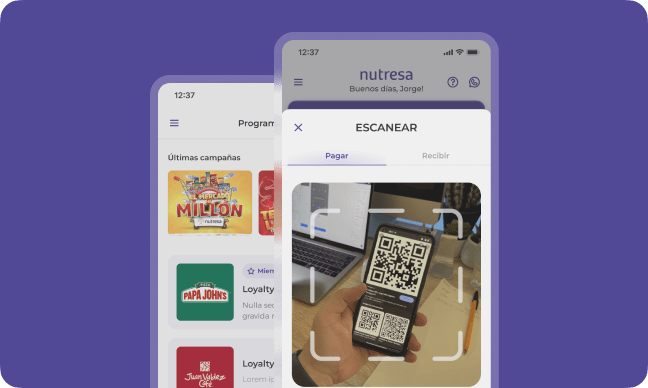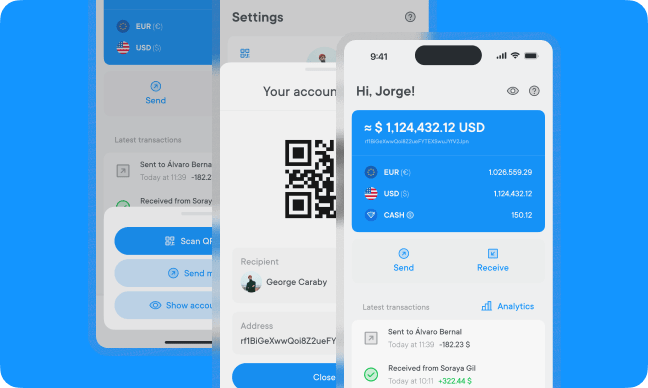Central Bank Digital Currency

Paving the way for the future of monetary transactions
Central banks play a crucial role in steering the course of our financial systems and are one of the main drivers of innovation in the payment ecosystem. As digitization sweeps across sectors, around 130 nations, accounting for 98% of the global economy, have turned their focus towards digital versions of their currencies.
What’s more, nearly half of these countries are already making strides, entering advanced stages of development, piloting projects, or even launching Central Bank Digital Currencies (CBDCs), as per recent studies. This unfolding global phenomenon highlights the potential of CBDCs to shape our economic future, heralding a new era of stability, inclusivity, and efficiency in financial transactions.







What is a CBDC?
A Central Bank Digital Currency (CBDC) represents a digital form of a country’s fiat currency, operating on blockchain technology. While offering enhanced efficiency, security, and transparency, it remains fundamentally the same as traditional money. It’s critical to clarify that CBDCs are not decentralized cryptocurrencies; most operate on permissioned or private blockchains, with the central bank as the network’s administrator.
Thus, CBDCs not only preserve but reinforce a central bank’s monetary sovereignty, by allowing it to control membership and regulate the system’s operation.
Privacy top challenge
One of the key puzzles still open for CBDCs and Central Banks is striking the right balance between leveraging blockchain’s traceability for Anti-Money Laundering (AML) enforcement and preserving citizen’s privacy. The inherent transparency of blockchain technology offers a potent tool for regulators, yet could potentially infringe on individual privacy rights. Hence, the design of CBDCs frequently incorporates advanced cryptographic techniques for selective transparency. This approach allows for regulatory compliance scrutiny, while ensuring the privacy of everyday transactions, showcasing the adaptability of blockchain technology to meet diverse and sometimes conflicting requirements.
Financial inclusion
CBDCs represent a potent tool for boosting financial inclusion. Despite advancements, an estimated 1.4 billion adults worldwide remain unbanked. CBDCs, as a digital equivalent of physical cash, could provide these individuals with secure, accessible, and cost-effective financial access, circumventing the constraints of traditional banking infrastructures. Furthermore, by conducting transactions through CBDCs, unbanked citizens could start building a credit history, potentially opening doors to low-interest loans and other financial services. The transparency and traceability inherent in blockchain technology also ensure that financial aid reaches the intended recipients, effectively combatting fraud and mismanagement.
Instant Payments and Programmability
Blockchain’s inherent characteristics make it an ideal technology to support instantaneous and programmable payments, two key features of CBDCs. Traditionally, central banks have had to devise complex settlement flows to facilitate instant payments, a feature which comes intrinsically built into blockchain technology. Blockchain eliminates the need for third-party intermediaries in settlements, streamlining transactions, reducing costs, and improving efficiency. Moreover, the programmability of digital currencies allows for automatic payments and built-in AML checks. These features not only reduce operational costs for financial institutions but also facilitate standardization of processes across the financial system, contributing to an overall more efficient and reliable monetary landscape.

Peersyst & CBDC
Implementing CBDCs is a complex yet rewarding endeavor, requiring a deep understanding of blockchain technology and the intricate workings of the public sector.
At Peersyst, we not only grasp these complexities but also have real-world experience in executing successful CBDC pilot projects in collaboration with public sector entities. We appreciate the significant responsibility central banks carry, and we are dedicated to navigating the regulatory challenges and ensuring the seamless integration of CBDCs into the existing financial ecosystem. Join us in charting the future of finance.
The future is digital. The future is CBDCs. Let Peersyst guide you on this transformative journey.
CBDC types
Wholesale
Wholesale CBDCs, utilized by financial institutions holding reserve deposits with central banks, streamline large-value interbank settlements. They enhance efficiency, reduce counterparty risk, and bolster the financial sector’s performance, including facilitating smoother cross-border transactions.
Retail
Retail CBDCs provide the public with a digital equivalent of cash, backed by state authority. They enable instant and QR-code enabled payments, offering a secure, efficient alternative to traditional currency. This modern approach to money enhances financial inclusion and simplifies day-to-day transactions.
Quick answers to questions you may have.
What is a CBDC? What is the real difference between fiat money?
A CBDC is the digital form of a country’s existing fiat currency, issued by the same central bank. It’s identical in value and function to traditional money but leverages blockchain technology for enhanced security and efficiency. This digitization enables features like instant payments and programmability, but at its core, a CBDC is the same money we use today.
Is CBDC decentralized? Does it mean CB lose control over the currency?
CBDCs typically operate on permissioned blockchains under the control of the central bank. While not fully decentralized like cryptocurrencies, they ensure the central bank retains monetary sovereignty. Typically, only institutions legally supervised by the central bank, such as banks, are allowed to participate.
Will CBDC replace cash?
CBDCs are not expected to completely replace cash, but rather complement it, similar to how credit cards and bank transfers have become additional forms of digital money. While offering a modern, efficient alternative, CBDCs will coexist with traditional cash, catering to diverse financial needs and preferences.
How does CBDC effect banks?
The impact of CBDC on banks depends on the specific implementation. In a wholesale CBDC model, banks see improved efficiency without major drawbacks. Even with retail CBDCs, banks remain crucial for conducting KYC and overseeing financial transactions. The design of CBDCs must consider banks’ funding needs and regulatory roles to ensure a balanced financial ecosystem.
Is CBDC a cryptocurrency?
CBDC is fundamentally different from a cryptocurrency. While both use blockchain technology, a CBDC is a digital form of a country’s fiat currency, issued and regulated by its central bank. It’s the same as traditional money, using advanced technology for efficiency and security. Unlike cryptocurrencies, which are often decentralized and subject to market volatility, CBDCs are stable and backed by the state, mirroring the trust and reliability of conventional fiat currency.
How CBDC support financial inclusion?
CBDCs enhance financial inclusion by providing accessible, digital banking services at low cost, helping unbanked populations engage with the financial system. They enable individuals to build credit histories and access services like low-interest loans. Additionally, CBDCs lower investment thresholds, allowing average citizens to participate in previously exclusive investment markets.



